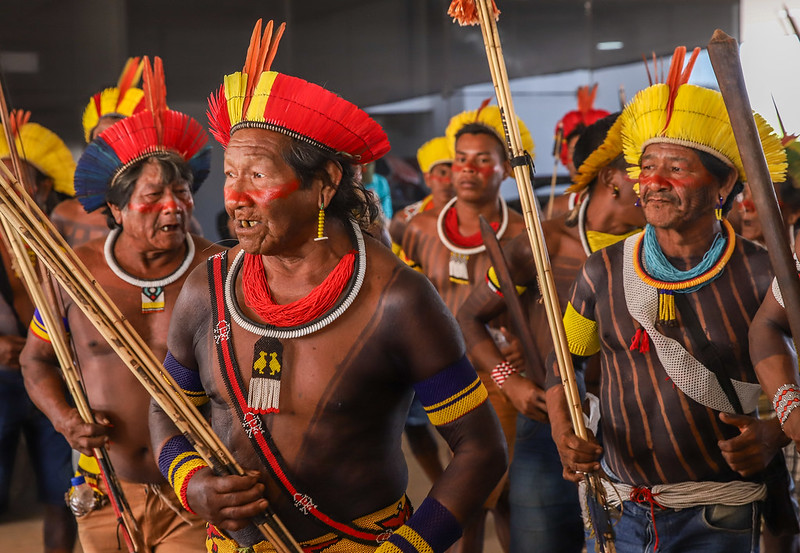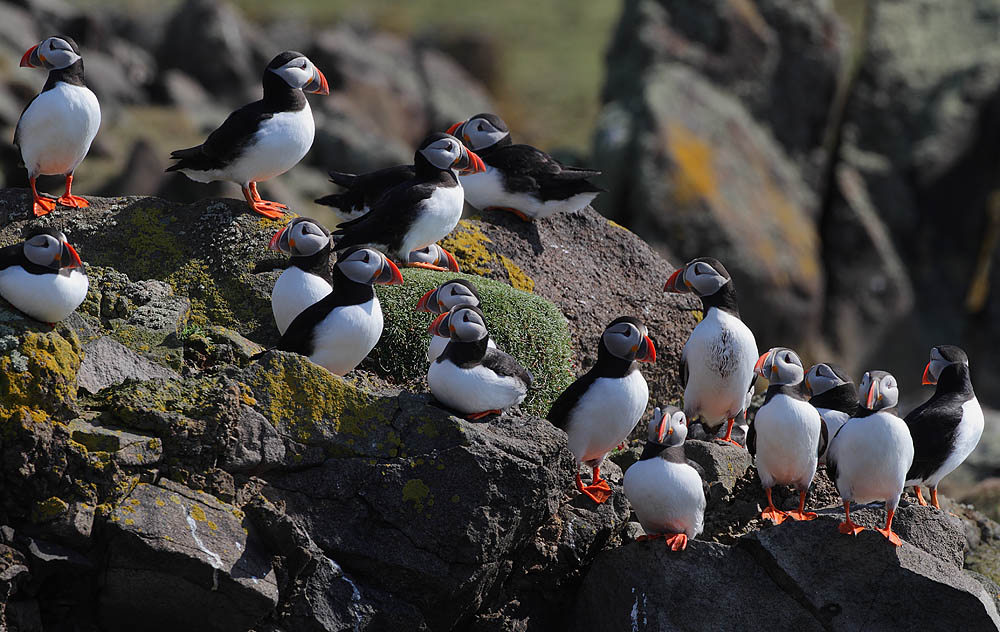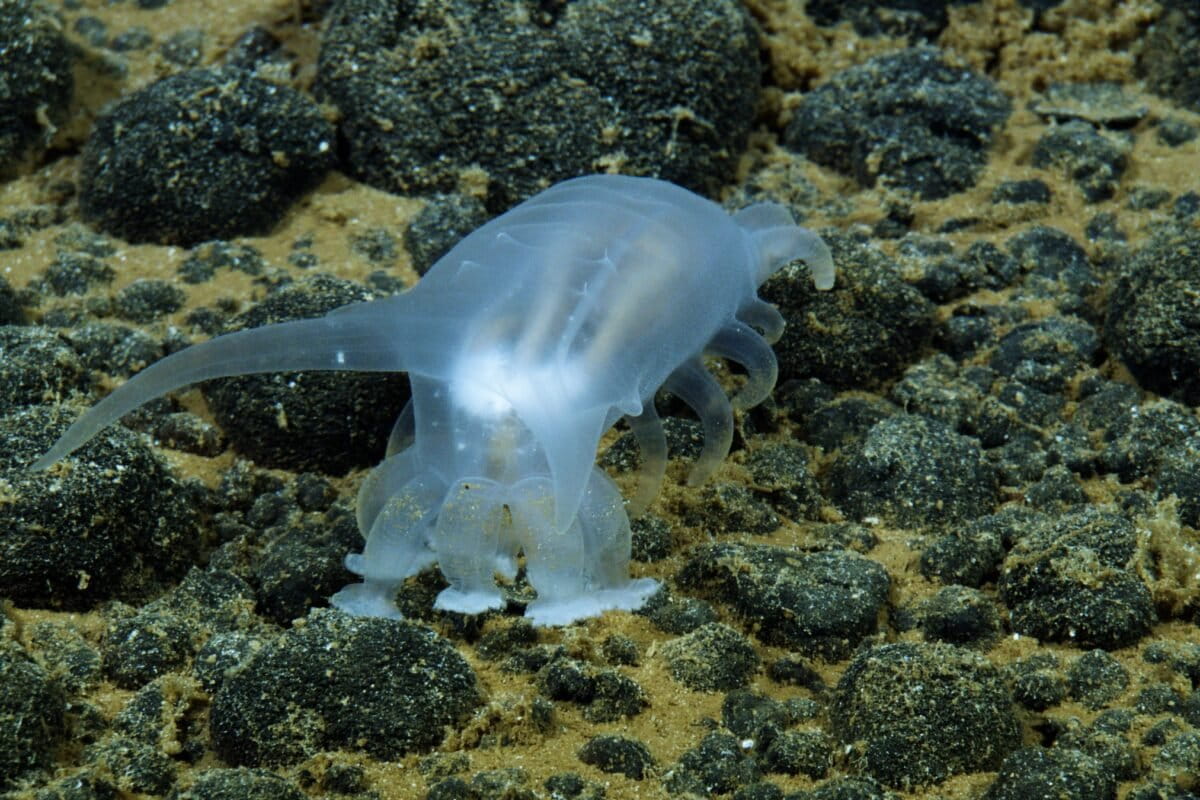- The 2025 U.N. climate conference, COP30, will run from Nov. 10-21 in Belém, Brazil, and is expected to host the largest participation of Indigenous peoples in the conference series’ history, with more than 3,000 Indigenous delegates registered.
- Mongabay spoke with some of the delegates from Latin America, Africa, Asia and the Pacific about their expectations for the conference and their objectives.
- They’re calling for recognition of Indigenous lands as a climate solution, a just energy transition, protection for forest defenders, and financial pledges that ensure at least 20% of forest conservation funds be directed to Indigenous and local communities.
- COP30 is expected to launch initiatives such as the Belém Action Mechanism for a just transition and the Tropical Forest Forever Facility. In the lead up to the conference, governments and donors also announced major commitments to recognize customary lands and provide funding support land rights.
See All Key Ideas
As the Brazilian city of Belém prepares for this year’s U.N. climate conference, COP30, Indigenous leaders worldwide say they’re getting ready to have their demands addressed. Dubbed the “nature COP” by some delegates, the 2025 conference is set to see the largest participation of Indigenous leaders in the climate conference’s history, with more than 3,000 Indigenous people registered.
The conference will run from Nov. 10-21 in Belém, a city known as the “gateway” to the Amazon Rainforest. Mongabay spoke to Indigenous leaders from Latin America, Asia, Africa and the Pacific to find out what they want from COP30.
“Upholding Indigenous peoples’ rights is only possible by placing them at the center of discussions, negotiations, and decision-making,” said Dinaman Tuxá, executive coordinator of the Articulation of Indigenous Peoples of Brazil (APIB), one of the country’s main Indigenous advocacy groups. “We aim to demand Indigenous land demarcation and direct financing as climate mitigation tools for combating global warming.”
At the COP30 World Leaders Summit on November 6, in the lead up to the conference, dozens of countries made major commitments to advance land rights and finance to Indigenous peoples, local and Afro-descendant communities, including recognizing 160 million hectares (395 million acres) of land and pledging $1.8 billion.
Indigenous delegates also plan to tackle a range of other issues, including climate adaptation, a just energy transition, carbon markets, loss and damage funding, and the protection of Indigenous peoples’ rights as the world eyes their forests for climate solutions.
Clouds above the rainforests in Amazon. Image by Rhett A. Butler/Mongabay.
An Indigenous COP?
For Indigenous delegates, however, just being at COP30 is already a challenge. Many have expressed widespread concern about the high cost of accommodation in Belém, which they said had effectively shut out many Indigenous delegates from attending.
“Many leaders from Tanzania struggled with registration, accessing the link for the accommodation application, so many were unable to attend this time,” said Gideon Sanago, a Maasai leader and coordinator for climate change at the Pastoralists Indigenous Non Governmental Organization’s Forum (PINGO’s Forum).
As of Oct. 31, delegations from 149 countries had confirmed lodging, while 37 were still negotiating, according to Reuters.
Sanago told Mongabay that leaders from Tanzania and Africa more widely are “not too optimistic” about this COP. However, he said he expects the conference to deliver pledges on direct climate finance and loss and damage funding for Indigenous peoples.
For Indigenous and Afro-descendant delegates from the host continent, this COP comes at a critical moment for advancing Afro-descendant participation and inclusion in land tenure planning and climate policy.
“At COP30, we [Garifuna communities] seek to create specific mechanisms for the binding participation of Afro-descendant communities in the decision-making processes on energy transition projects specifically, while hoping to push negotiations for the country to sign and enforce the Escazú Agreement to protect our environmental defenders,” said Gregoria Jimenez, a Garifuna leader and director of the Community Ethnic Development Organization (ODECO), a Honduras-based Indigenous and Afro-descendant rights organization.
She told Mongabay that while Honduras has sent a large delegation to COP30, it consists mostly of government officials, who she said she doesn’t expect to adequately represent them.
Indigenous peoples march during a parade in Pontianak, West Kalimantan, Indonesia. Image courtesy of baka_neko_baka/flickr.
For Indigenous representatives from Asia and the Pacific, there’s always been a severe underrepresentation at climate talks, according to Rukka Sombolinggi, secretary-general of Indonesia’s Indigenous Peoples Alliance of the Archipelago (AMAN). She said Indigenous peoples from this region are often overlooked, despite representing around 70% of the total population of the world’s Indigenous peoples.
“At COP30, we try to ensure that our leaders gain prominent visibility as we also guard the majority of the world’s biodiversity, intact ecosystems, and biomes that are under threat from energy transition and drawn to greenwashing from carbon markets,” she told Mongabay.
Strong climate solutions
Most countries hadn’t submitted their latest emissions reduction pledges under the Paris Agreement, known as their nationally determined contributions (NDCs), by the deadline at the end of September. Now, more than 100 countries have pledged to submit their updated NDCs, which must be renewed every five years, by COP30. So far, 67 countries have done so. Brazil, the host country, submitted its updated NDC in November 2024.
While transitioning to renewable energy is a central pillar of these NDCs, Tuxá pointed out that the energy transition often means more mining of critical minerals — which can lead to new social, environmental and economic challenges when they fail to respect the inclusion, participation and rights of Indigenous peoples.
At COP30, parties aim to launch the Belém Action Mechanism (BAM), a global initiative for a just energy transition. During preparatory climate talks in Bonn, Germany, in June, countries agreed to advance the Just Transition Work Programme (JTWP), established at COP27, in Sharm el-Sheikh, Egypt, in 2022. The JTWP is meant to help countries shape fair and ambitious transition pathways.
Tuxá told Mongabay that COP30 should also emphasize developing stronger climate solutions than previous COPs.
“We demand demarcation [of Indigenous territories] as a climate goal, not only for Brazil’s NDC, but also for [other] countries to commit to supporting politically and financially,” Tuxá said. “The demarcation of Indigenous lands as a concrete climate goal to combat global warming.”
Recent analysis indicates that Indigenous lands and protected areas play a crucial role in curbing deforestation. Expanding Indigenous protection of forests would prevent up to 20% of additional deforestation and 26% of carbon emissions by 2030.
In the lead up to the conference, some governments are seeking to address these goals. At the COP30 World Leaders Summit, the Forest & Climate Leaders’ Partnership and the governments of Brazil, Peru and Norway commitment to collectively recognize and strengthen 160 million hectares of Indigenous peoples and local community lands by 2030 through the Intergovernmental Land Tenure Commitment. And at an event in Rio de Janeiro this week, Indonesia’s forestry minister announced the country’s commitment to recognizing 1.4 million hectares (3.5 million acres) of customary forests for Indigenous peoples.
A Samburu pastoralist watches over their herd in northern Kenya’s Sera Community Conservancy. Image by Ashoka Mukpo for Mongabay.
Any future pledges to secure Indigenous land rights and sequester carbon should be more expansive, said Deborah Sanchez, director of the Community Land Rights and Conservation Finance Initiative (CLARIFI) at the Rights and Resources Initiative (RRI).
“We want to see the pledges go beyond just forests,” Sanchez said. “Indigenous peoples steward other ecosystems that are a major carbon sink, for example, the grasslands protected by the pastoralists.”
Puyr Tembé, secretary of Indigenous Peoples of the Brazilian State of Pará, also said there should be binding commitments to protect leaders and forest guardians who protect these lands. A recent report shows 146 environmental defenders were killed or went missing in 2024, many of them due to land conflicts linked to mining, logging and agribusiness.
“As Indigenous peoples, we expect the full implementation of Cancun Safeguards [which guide the implementation of U.N. REDD+ activities to reduce deforestation], ensuring territorial, social, and cultural rights for Indigenous peoples,” Tembé told Mongabay.
A flurry of financial pledges
At the COP30 World Leaders Summit, 35 government and philanthropic funders organized by the Forest Tenure Funders Group (FTFG) announced they will be renewing the original $1.7 billion financial pledge to support Indigenous peoples, local communities, and Afro-descendant communities in securing land rights — expanding beyond forests to ecosystems like mangroves and savannahs. The renewed pledge commits $1.86 billion over five years, building on the completion of the previous fund, the COP26 Forest Tenure Pledge, which was recently met one year ahead of schedule.
At the summit, Brazil also launched the Tropical Forest Forever Facility (TFFF), a funding mechanism that rewards countries for conserving their tropical forests. The provision requiring 20% of annual payments be allocated to Indigenous peoples and local communities to help them maintain their forests was celebrated by Indigenous leaders who pushed for this commitment. They say that any pledges or negotiations will fall short unless direct financing is provided to Indigenous and local communities.
“The guarantee that at least 20% of TFFF payments will go directly to us, Indigenous Peoples and local communities on the front lines of defending forest biomes, is a historic victory that recognizes our leadership in the fight against climate change,” said Juan Carlos Jintiach, executive secretary of the Global Alliance of Territorial Communities (GATC). “Funds must follow legitimate paths, ensuring that territorial organizations themselves are the ones to receive them, without getting trapped in bureaucracy or becoming instruments of political dispute.”
A women harvests leaves from Gnetum spp. (okok) in the village of Minwoho, Cameroon. Photo by Ollivier Girard/CIFOR via Flickr (CC BY-NC-ND 2.0).
An Indigenous Tharu woman uses a hand-woven net to collect mussels and ghonghi (water snails) in Bulbule lake in Surkhet district, Nepal. Image by Sonam Lama Hyolmo/Mongabay.
While some funding pledges, like the COP26 Forest Tenure Pledge, have increased direct funding to Indigenous peoples and local communities over the years, advocates say the pace is extremely slow. When it comes to Indigenous women accessing funding, Cécile Bibiane Ndjebet, founder of the African Women’s Network for Community Management of Forests (REFACOF), said it’s still disproportionately low.
“In Belém, we want to open up possibilities, avenues, mechanisms for women to access climate finance directly,” she told Mongabay.
Fred Launay, chief executive officer of Panthera, a global wild cat conservation organization, emphasized the need for a paradigm shift in finance to one that values the bond between communities and wildlife.
“Working with Indigenous peoples and local communities ensures that we stop financing the destruction of nature while increasing capital flows towards protection, restoration, and sustainable management of nature,” Launay said.
Indigenous delegates also say making good on funding pledges to adapt to climate change and deal with its impacts is paramount. The goal of the Glasgow Climate Pact, at COP26 in 2021, to double adaptation finance to $40 billion by 2025 will not be met. And despite governments pledging $768.4 million to the Fund for Responding to Loss and Damage (FRLD) at COP28 in Dubai in 2023, only $321 million has been paid into the fund so far.
Colombian climate activist Sofía Gutiérrez on stage after a march through the streets of Glasgow, Scotland, host city of the COP26 U.N. Climate Summit. Image by AP Photo/Jon Super.
Rukka said these issues must take priority in negotiations, given the increasing climate disasters, such as droughts, wildfires, floods and landslides, affecting Indigenous communities worldwide.
“If there are no funding pledges for adaptation, mitigation, loss and damage at this COP, we [Indigenous communities] won’t be able to carry on like we used to,” she said.
At last year’s COP29, in Baku, Azerbaijan, countries agreed on a New Collective Quantified Goal (NCQG) to provide $300 billion annually for climate action in industrially developing countries by 2035, and aim for $1.3 trillion annually over the same period. Indigenous delegates said they expect this year’s COP30 to come up with a road map to achieve that goal.
“What we need is a balance in investment between adaptation and mitigation — financing that measures not only tons of carbon, but also lives protected, cultures preserved, and resilient territories,” said Leo Cerda, a member of the Serena Kichwa community and founder of Hakhu Amazon Foundation in Ecuador.
Cerda was part of the Amazon Yaku Mama flotilla, which made the 3,000-kilometer (1,860-mile) journey from the Andes to the climate summit in Belém to demand climate justice and a role in decision-making.
For Levi Sucre Romero, the general director of the Mesoamerican Alliance of Peoples and Forests, COP30 will stand out if it delivers solutions that truly address the needs and realities of Indigenous peoples and “not only new pledges.”
Banner image: Indigenous leaders marching against the time frame thesis on the Esplanade of the Ministries in Brasilia, Brazil’s federal capital. The general coordinator of the Coordination of Indigenous Organizations of the Brazilian Amazon (COIAB) says the data in the recently published study are also important for Indigenous organizations and people in their efforts to demarcate new territories. Image by Antônio Cruz/Agência Brasil via Flickr, courtesy of EBC/Brazil Communication Company.
COP26 pledge to support Indigenous & local forest tenure was just met. What was learned?
Related Mongabay podcast episode: Bridging Indigenous and Western knowledge with science and radio. Listen here:
Feedback: Use this form to send a message to the author of this post. If you want to post a public comment, you can do that at the bottom of the page.





